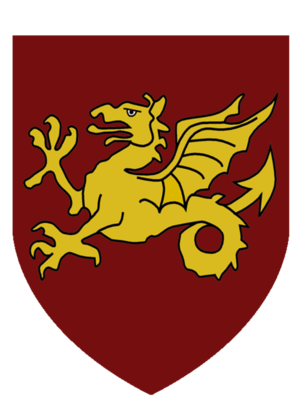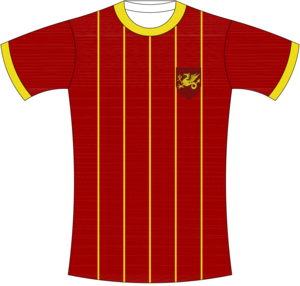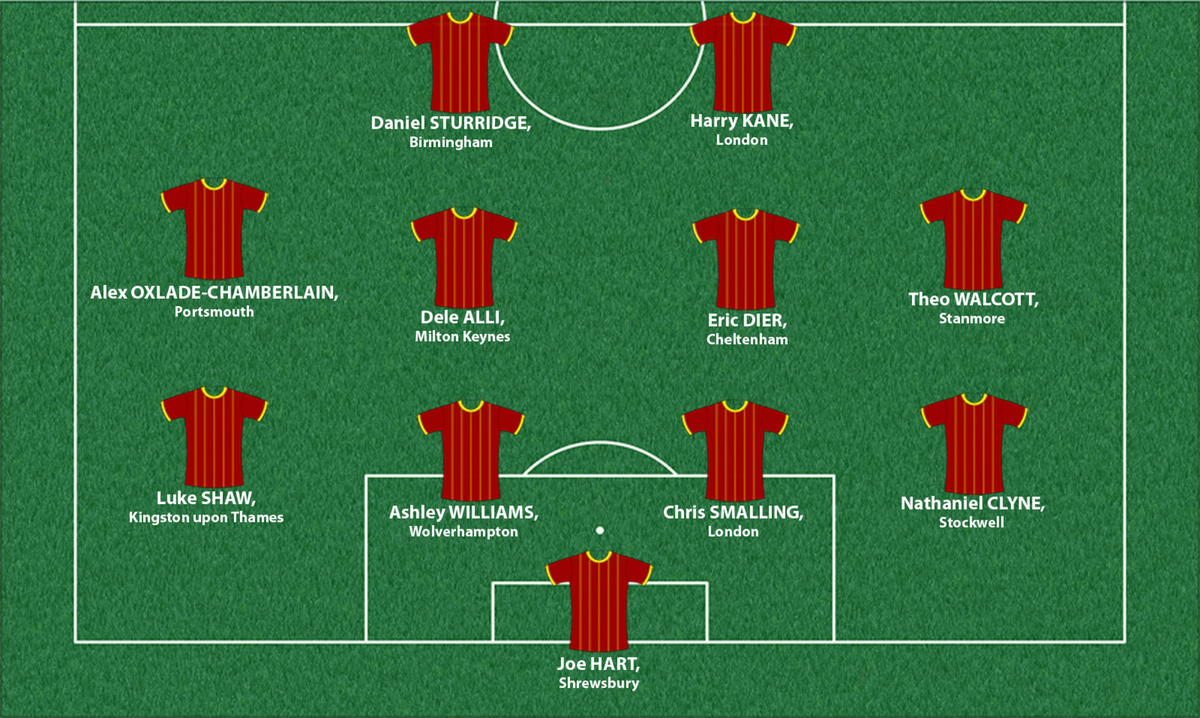The Kingdom of Wessex
The Kingdom of Wessex was a West Saxons kingdom founded in the 6th century on the southern part of British Isle. Wessex’s political and territorial culmination will be achieved in the first half of the 10th century. when its rulers will extend their reign to almost half of Isle.

Coat of arms

Shirt
| Position | First name | Last name | Mjesto rođenja | Like | Dislike | |
|---|---|---|---|---|---|---|
| GK | Fraser | FORSTER | Hexham |
4 |
1 |
|
| GK | Jack | BUTLAND | Bristol |
7 |
2 |
|
| GK | Joe | HART | Shrewsbury |
14 |
6 |
|
| DC | Ashley | WILLIAMS | Wolverhampton |
3 |
0 |
|
| DC | Chris | SMALLING | London |
6 |
9 |
|
| DC | Kieran | CLARK | Harrow |
0 |
0 |
|
| DC | Wes | MORGAN | Nottingham |
2 |
0 |
|
| DRC | Calum | CHAMBERS | Petersfield |
1 |
0 |
|
| DRC | Joe | GOMEZ | Catford |
2 |
0 |
|
| DR | Nathaniel | CLYNE | Stockwell |
3 |
1 |
|
| DL | Luke | SHAW | Kingston upon Thames |
13 |
3 |
|
| DL | Ryan | BERTRAND | Southwark |
3 |
2 |
|
| DRC/DMC | Eric | DIER | Cheltenham |
18 |
3 |
|
| DMC | Jake | LIVERMORE | London |
2 |
0 |
|
| MC | James | WARD PROWSE | Southampton |
1 |
0 |
|
| MC | Ruben | LOFTUS CHEEK | Lewisham |
2 |
0 |
|
| AMC | Adam | LALLANA | St.Albans |
11 |
11 |
|
| AMC | Dele | ALLI | Milton Keynes |
22 |
8 |
|
| AMRLC | Alex | OXLADE-CHAMBERLAIN | Portsmouth |
12 |
1 |
|
| MRL/DL | Matt | RITCHIE | Gosport |
0 |
0 |
|
| AMRL | Ashley | YOUNG | Stevenage |
4 |
0 |
|
| AMRL | Demarai | GRAY | Birmingham |
1 |
0 |
|
| AMRL | Nathan | REDMOND | Birmingham |
5 |
0 |
|
| AMR/DR | Michail | ANTONIO | London |
5 |
3 |
|
| FRLC | Andre | GRAY | Wolverhampton |
2 |
0 |
|
| FC | Harry | KANE | Chingford |
20 |
4 |
|
| FC | Jermaine | DEFOE | London |
1 |
0 |
|
| FC | Sam | VOKES | Southampton |
0 |
0 |
|
| FC | Tammy | ABRAHAM | London |
1 |
0 |
|
| FC | Troy | DEENEY | Birmingham |
2 |
0 |
(Today part of: southern and central England)
The successful defense against the Danes by the king of Wessex had brought their push to an end, and brought about the forming of the Danish district of Danelaw, which stretched along the eastern part of the Isle. However, king Alfred (r. 871 – 899) had soon made a counterattack, deeming himself the representative of Christianity and all Anglo-Saxons, against the pagan Danes. Alfred put the king of Mercia under his sovereignty, and took the title of the King of the Angles and Saxons for himself, but he never ruled the eastern and northern parts of the Isle. The defeated Danes could keep their lands, but they had to convert to Christianity. Although the expansion under Alfred’s successors could be presented as liberation from the Danes, in reality it was conquest in which the rulers of Wessex brought all of the former kingdoms under their control.
Alfred’s grandson Athelstan (ruled 924 – 939) will be the first ruler who had styled himself the King of England (Rex Anglorum). Since his time we can speak of England, seen as how a unification of the laws of various kingdoms had soon followed, while the Wessex dialect will become the standard language of administration in the whole land, and a foundation for numerous secular and religious literatures, or Latin translations from that time. Serving the king brought one land and title: that which was once a personal loyalty to a warband, had been given an ever increasing territorial shape, an official form, an aristocratic position and continuity. London also began to rise, whose greatest strength was that it had not been used as a seat by any king, nor was it a regional center, but it had had its own identity which had enabled the Saxons, Angles and Jutes to freely meet, in addition to being city through which the English would recognize their continuity with Roman Britain.
Sources
- Jeremy BLACK, Povijest Britanskih otoka, Zagreb, 2004.
- Adrian HASTINGS, Gradnja nacionaliteta , Rijeka, 2003.
- ''List of Eenglish monarchs'', https://en.wikipedia.org/wiki/List_of_English_monarchs
- ''Old English'', https://en.wikipedia.org/wiki/Old_English
- Coat of Arms:
- http://conworld.wikia.com/wiki/Wessex_Project_Reconstruction
